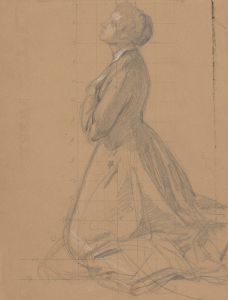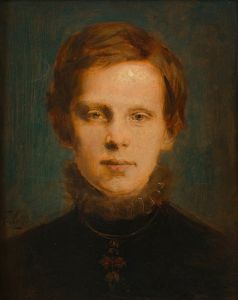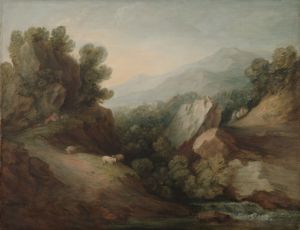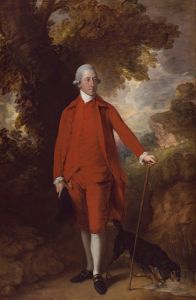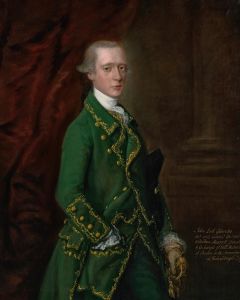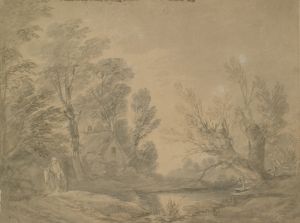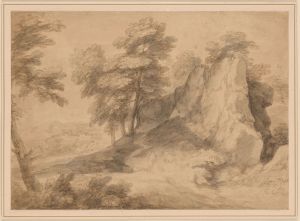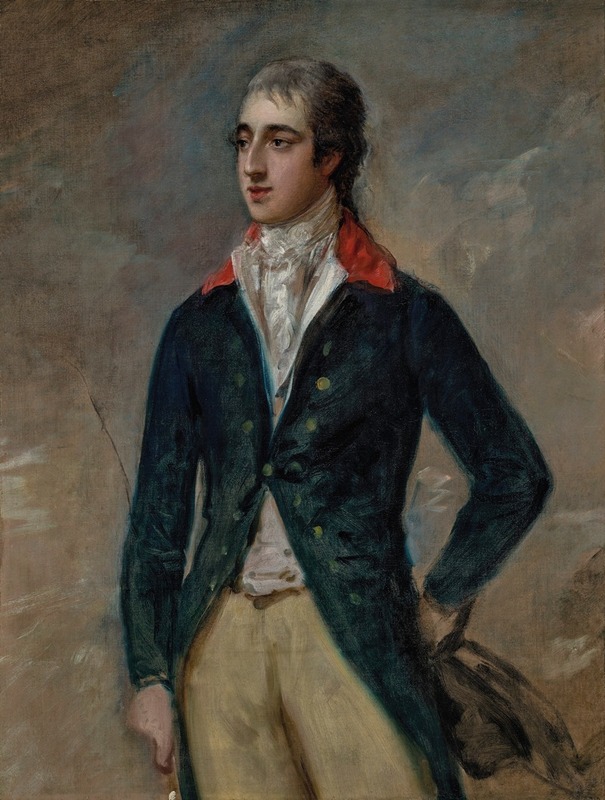
Portrait of Prince Ernest Augustus , later King of Hanover
A hand-painted replica of Thomas Gainsborough’s masterpiece Portrait of Prince Ernest Augustus , later King of Hanover, meticulously crafted by professional artists to capture the true essence of the original. Each piece is created with museum-quality canvas and rare mineral pigments, carefully painted by experienced artists with delicate brushstrokes and rich, layered colors to perfectly recreate the texture of the original artwork. Unlike machine-printed reproductions, this hand-painted version brings the painting to life, infused with the artist’s emotions and skill in every stroke. Whether for personal collection or home decoration, it instantly elevates the artistic atmosphere of any space.
Thomas Gainsborough, one of the most prominent British portrait and landscape painters of the 18th century, is renowned for his ability to capture the character and elegance of his subjects. Among his numerous works, the "Portrait of Prince Ernest Augustus, later King of Hanover" stands out as a significant piece, reflecting both the artist's skill and the historical context of the subject.
Prince Ernest Augustus was born on June 5, 1771, as the fifth son of King George III of the United Kingdom and Queen Charlotte. He later became the King of Hanover, reigning from 1837 until his death in 1851. His life was marked by his military career, political involvement, and eventual ascension to the throne of Hanover following the separation of the British and Hanoverian crowns upon the accession of Queen Victoria.
The portrait by Gainsborough captures Prince Ernest Augustus during his youth, a period when he was still a prince and not yet burdened by the responsibilities of kingship. Gainsborough's work is characterized by its delicate brushwork and the subtle use of color, which together create a sense of immediacy and presence. The artist's ability to convey the texture of fabrics and the sheen of metals is evident in this portrait, as is his skill in rendering the sitter's expression and posture.
In this painting, Gainsborough employs a composition that highlights the prince's noble bearing and youthful vigor. The background is typically understated, a common feature in Gainsborough's portraits, which serves to focus attention on the subject. The use of light and shadow in the portrait is masterful, adding depth and dimension to the figure of Prince Ernest Augustus.
Gainsborough's portraits are often noted for their psychological depth, and this work is no exception. The artist captures a sense of the prince's personality, suggesting both his aristocratic status and his individual character. This ability to blend the public and private aspects of his subjects is one of the reasons Gainsborough remains a celebrated portraitist.
The historical significance of the portrait is enhanced by the later life of its subject. As King of Hanover, Ernest Augustus played a crucial role in the political landscape of 19th-century Europe. His reign was marked by efforts to maintain the independence and stability of Hanover amidst the changing dynamics of European politics.
The "Portrait of Prince Ernest Augustus, later King of Hanover" by Thomas Gainsborough is not only a testament to the artist's skill but also a valuable historical document. It provides insight into the life and character of a significant figure in European history, captured at a time before he assumed the responsibilities of kingship. Gainsborough's work continues to be appreciated for its artistic merit and its contribution to our understanding of the past.





